Notes
Sarah Stacke: Picturing Family in Manenberg
Love From Manenberg is not about gangs, poverty, or drug abuse, even though all of those things exist there. It is about how messy life is, and about the relationships photographer Sarah Stacke made and maintains in this Cape Town suburb. This is the fifth and final installment from an extended series.
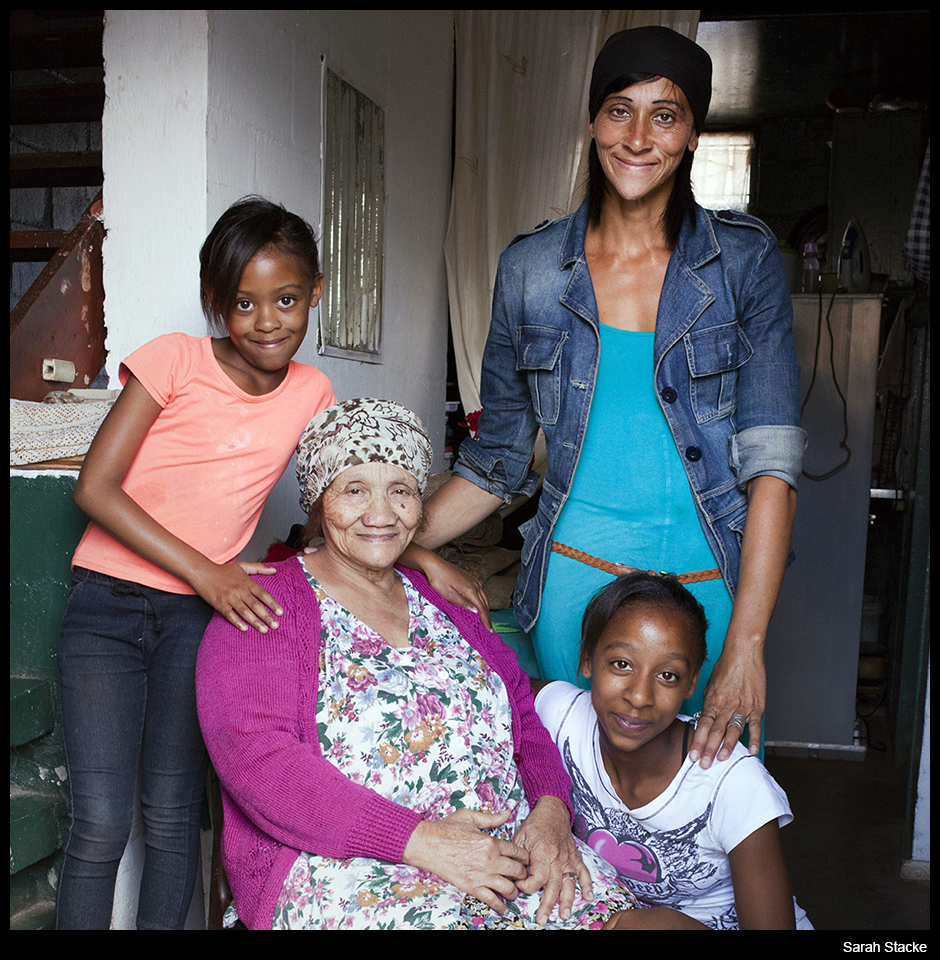 Three generations of the Adams family gather for a portrait in Manenberg, South Africa. This image was printed and given to Jessica Adams, top right, to add to her collection of family photographs.
Three generations of the Adams family gather for a portrait in Manenberg, South Africa. This image was printed and given to Jessica Adams, top right, to add to her collection of family photographs.
In the pictures taped to the painted concrete walls inside Debby Lottering’s home, her three kids are posed in singles, pairs, lines, and orderly groups. They look straight into the lens and their smiles are lit by the brightest light around. These are the pictures I make to leave behind in Manenberg, a suburb of Cape Town, South Africa that I’ve been photographing since 2011.
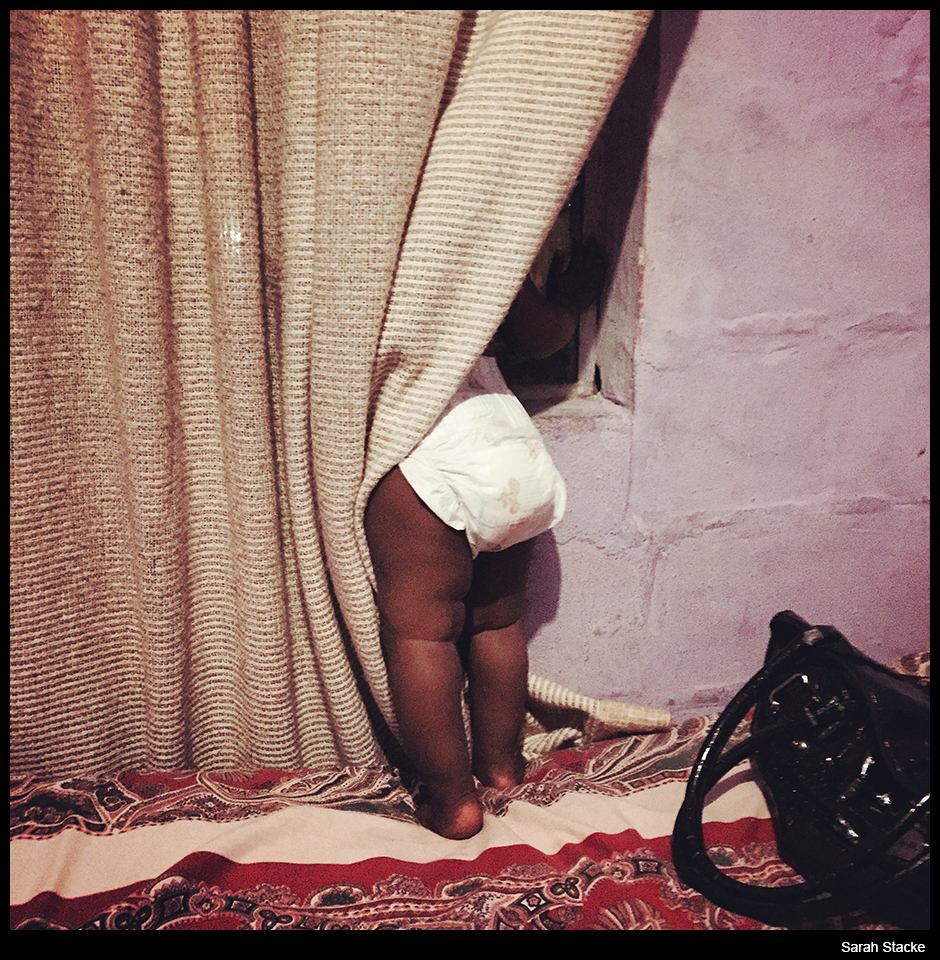 Zipporah Lottering hides behind the curtains at her home in Manenberg, South Africa. This iPhone image was given to Debby Lottering, Zipporah’s mother, by Sarah Stacke as one way to say “thank you” for the time and access the Lottering family offers the photographer.
Zipporah Lottering hides behind the curtains at her home in Manenberg, South Africa. This iPhone image was given to Debby Lottering, Zipporah’s mother, by Sarah Stacke as one way to say “thank you” for the time and access the Lottering family offers the photographer.
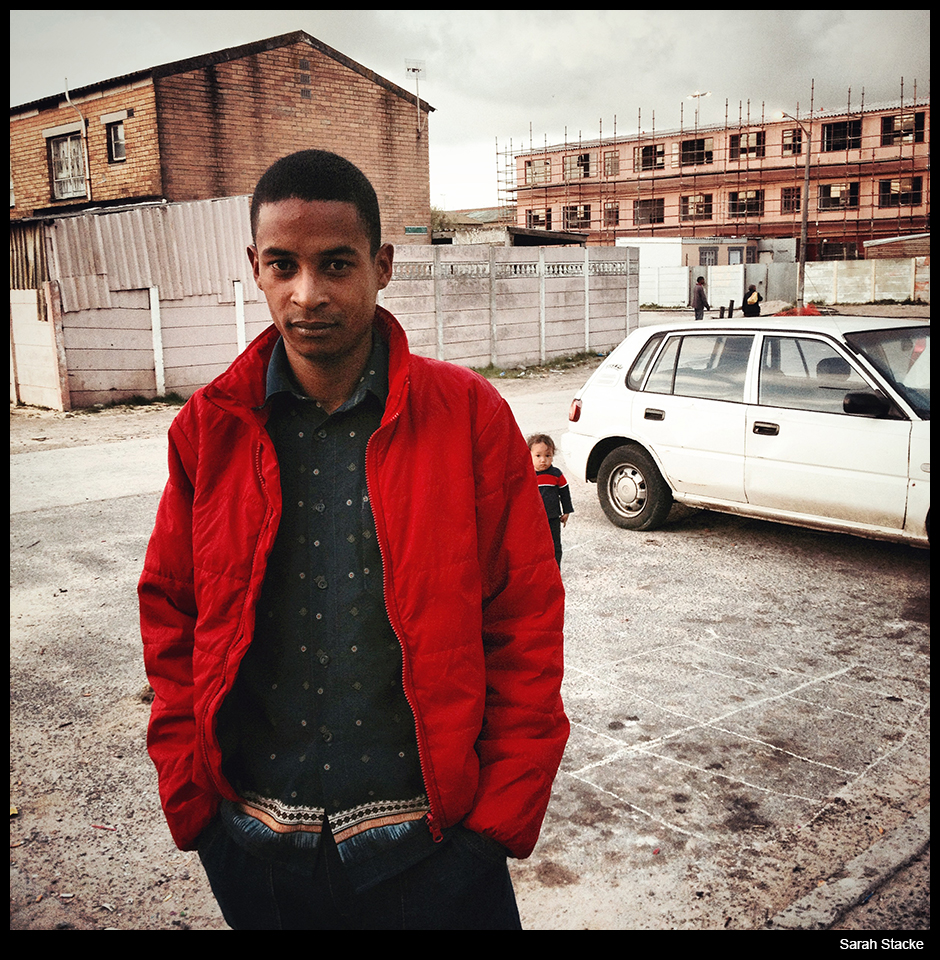 Baron Moses of Manenberg, South Africa.
Baron Moses of Manenberg, South Africa.
At the end of each visit, which vary from a week to two months, I print hundreds of photographs and give them to the people pictured. It’s one way to give something back and show my appreciation for the time they’ve spent sharing their lives with me. Over the years, the images have made it into frames and onto the walls of various families, they’ve been taped to hot water heaters, and stuck between the pages of books for safekeeping.
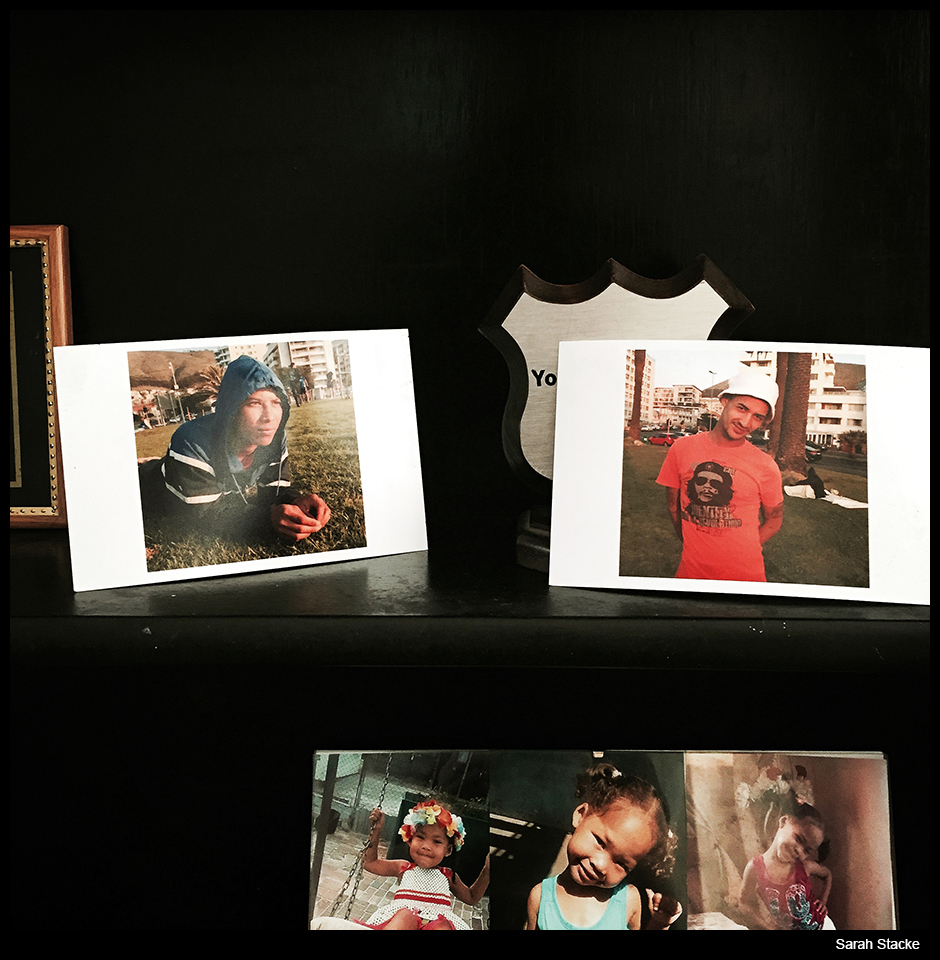 Two photographs left with the Maxwell family are displayed on a bookshelf inside their home in Manenberg, South Africa. Shane Maxwell, left, was a close friend of Ashwin Pietersen, right, who was killed in December 2014. The photograph of Pietersen, also given to his own family, was used on his funeral pamphlet.
Two photographs left with the Maxwell family are displayed on a bookshelf inside their home in Manenberg, South Africa. Shane Maxwell, left, was a close friend of Ashwin Pietersen, right, who was killed in December 2014. The photograph of Pietersen, also given to his own family, was used on his funeral pamphlet.
This is a simple gesture – on my part and on the part of the people who save and arrange the photos – but the dispersal of this archive plays several roles. In the case of Ashwin Pietersen, a young man killed in a gang fight, the pictures of Ashwin I gave to his family are among the few they have. One of the pictures was used for his funeral pamphlet. The pictures of Naomi Lottering, Debby’s older sister who primarily lives on the streets, provide – as far as I know – the only visible record of Naomi’s life and whereabouts over the last four years. For Debby, the pictures of her kids, friends, and father have become the default family photo album of recent years. There are also many photographs of which I don’t know the fate. Often, in the rush of packing and tying loose ends, I leave the pictures of the people I don’t regularly see with Debby. She distributes them around town in the days after my departure, a business she tells me relishes.
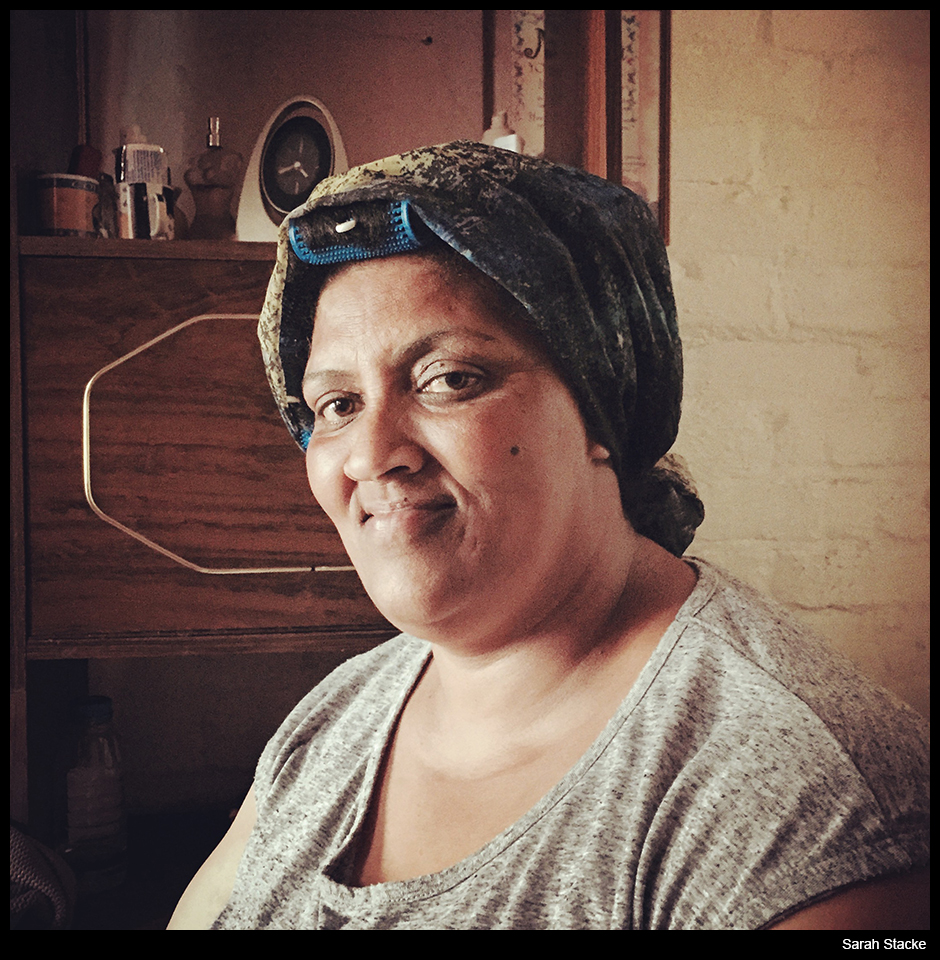 Queenie Duplessis of Manenberg, South Africa.
Queenie Duplessis of Manenberg, South Africa.
For the most part, images of Manenberg in the news highlight one thing: gang violence. The images I select for Love From Manenberg, the ongoing series that results from my time there, don’t overlook Manenberg’s serious social issues, but the series makes every effort to represent the community as the complex and culturally rich place that it is. The photographs I leave behind draw attention to the strength of character and abundance of love, compassion, and resiliency that holds the fabric of Manenberg together. These channels of picturing Manenberg each have their own distinct consequences and influences.
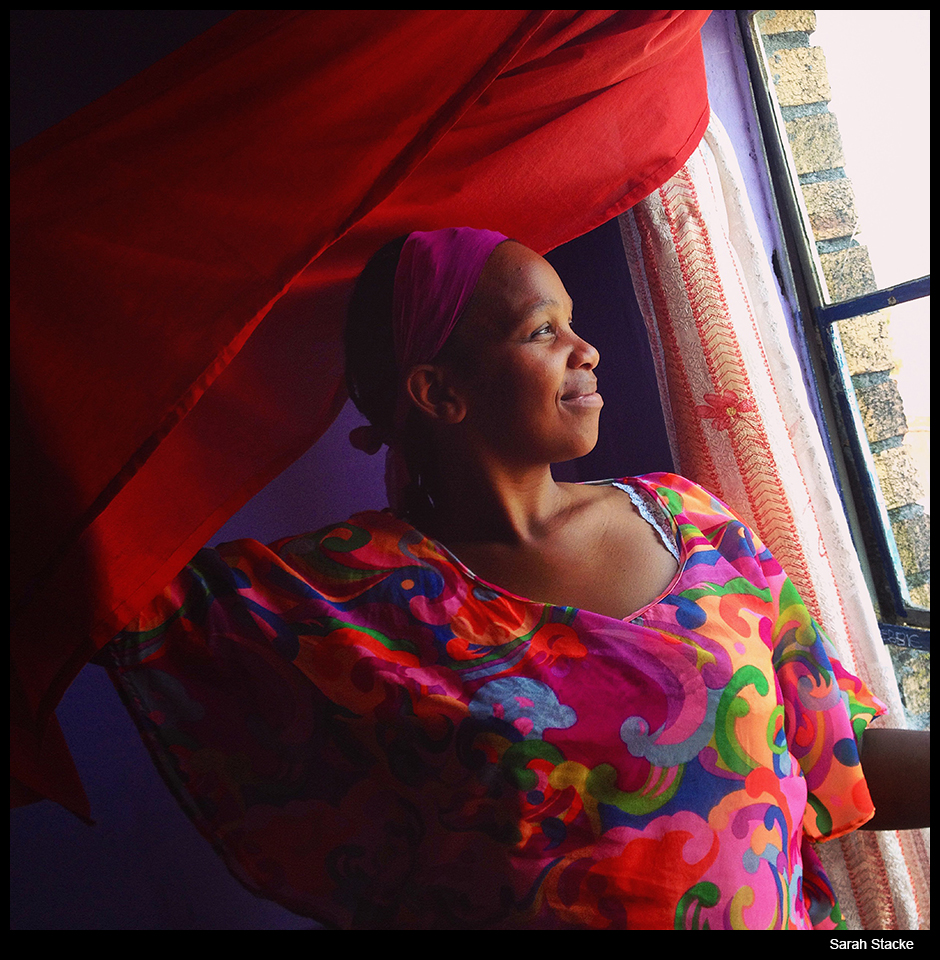 Debby Lottering looks out the window of her second-floor bedroom in Manenberg, South Africa. The image, made with an iPhone, was printed and given to Lottering at the end of photographer Sarah Stacke’s visit. A copy of the photograph also hangs on Stacke’s wall in Brooklyn, New York.
Debby Lottering looks out the window of her second-floor bedroom in Manenberg, South Africa. The image, made with an iPhone, was printed and given to Lottering at the end of photographer Sarah Stacke’s visit. A copy of the photograph also hangs on Stacke’s wall in Brooklyn, New York.
One of the many powers of photography is that it shapes how we see and reflect on the world and ourselves. Even though almost everyone I’ve met in Manenberg takes pictures with their phones and the cost of printing photos is somewhat reasonable, it seems to be the inconvenience that impedes one from having pictures printed. This is a side effect of digital photography everywhere. But perhaps it is in the very places where challenges abound, such as Manenberg, where family photo albums can hold the most power to shape identity and collective memory. There are few things that make me happier as a photographer than to see the pictures I’ve left behind stored and displayed alongside family photographs, cherished by generations long before I ever stepped foot in Manenberg.
See the complete series here.
Photographs and text by Sarah Stacke.


Reactions
Comments Powered by Disqus